Scala Seq
Overview
Scala Seq is a fundamental data structure in the Scala programming language, standing for "sequence." It represents an ordered collection of elements with a specific type. Seqs can be immutable or mutable, providing a range of functionalities like indexing, iteration, and transformation operations such as map, filter, and fold. Common implementations include List, Vector, and ArraySeq.
Introduction
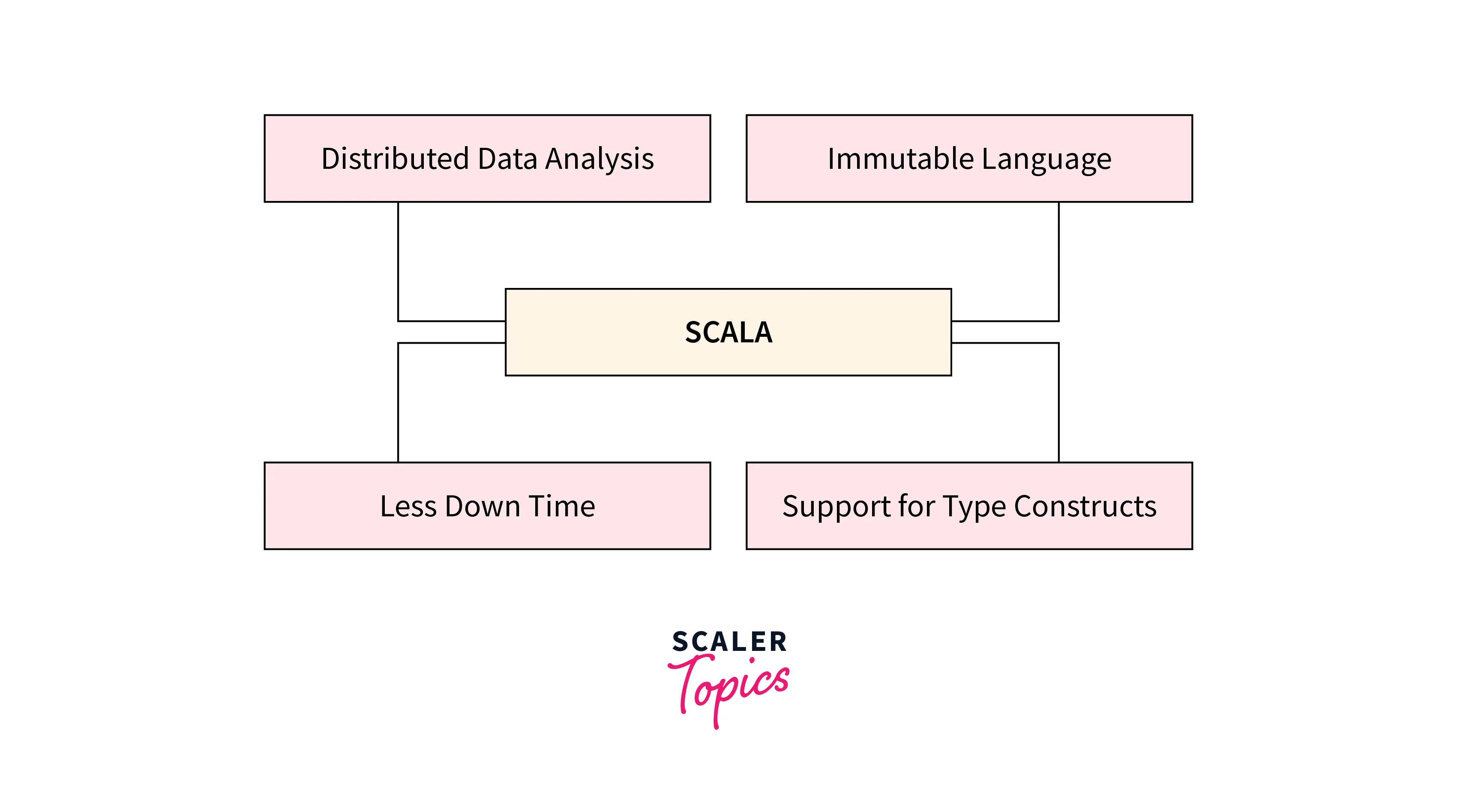
Scala is a versatile programming language that seamlessly blends object-oriented and functional programming paradigms. Designed to be concise and expressive, Scala runs on the Java Virtual Machine (JVM) and offers robust type inference, aiding in writing clean and readable code.
Moreover, its support for both imperative and declarative styles empowers developers to tackle a wide array of programming challenges.
Why is scala important?
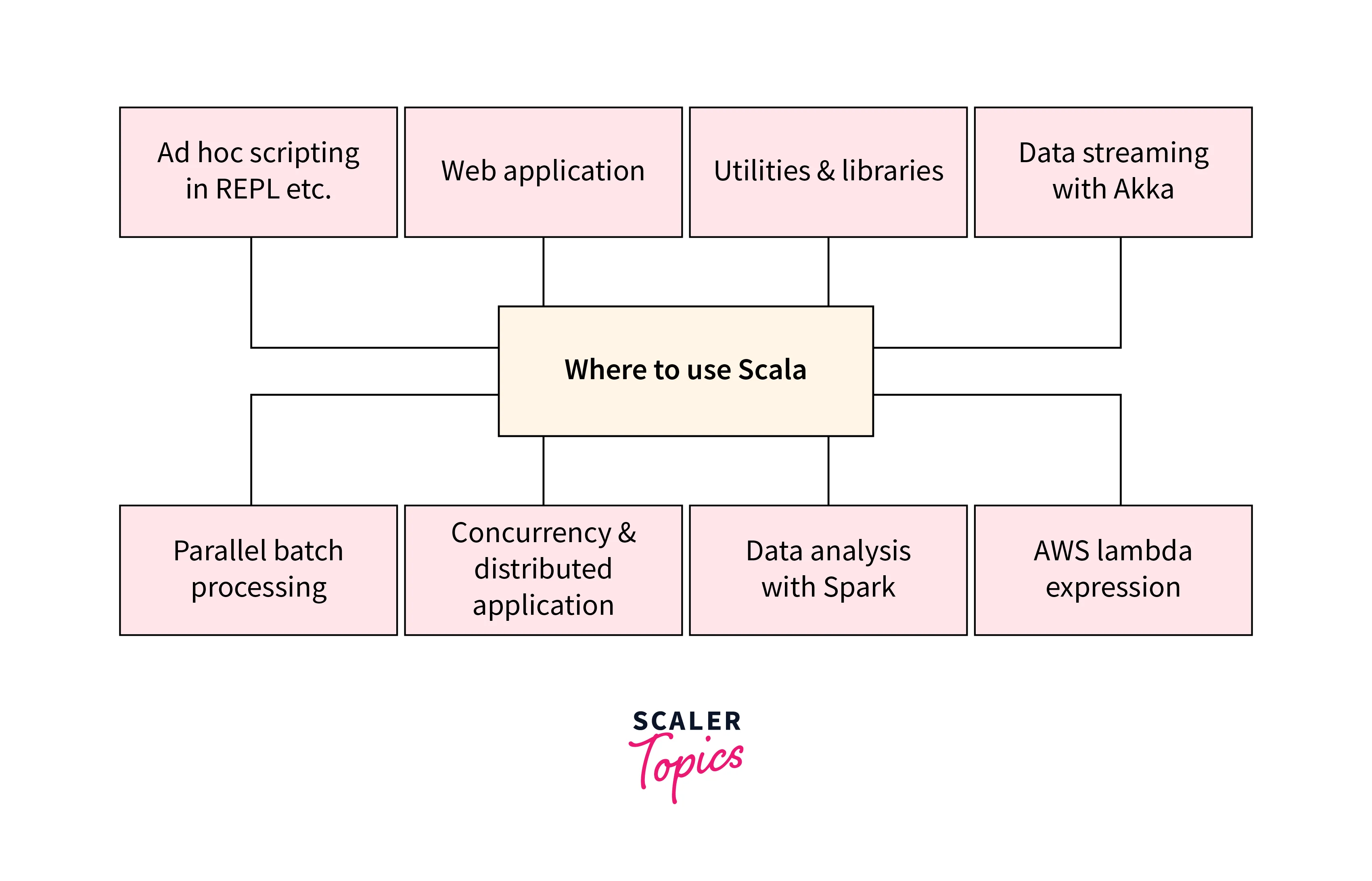
Scala's fusion of object-oriented and functional programming paradigms enables developers to write code that is both concise and expressive, enhancing productivity and maintainability.
- Combines functional and object-oriented paradigms:
Scala is unique in its ability to seamlessly blend both functional and object-oriented programming styles. This allows developers to choose the best approach for specific tasks, leading to more flexible and expressive codebases. - Concise syntax enhances readability:
Scala's concise syntax reduces verbosity and boilerplate code. This results in cleaner, more readable code, making it easier to understand and maintain programs. - Strong static typing catches errors early:
Scala's static typing requires variables to be declared with specific types, catching many errors at compile time. This leads to more robust and reliable software. - Emphasizes immutability for safer code:
Immutability is encouraged in Scala, promoting the use of unchangeable data structures. This reduces the risk of unintended side effects and simplifies reasoning about code behavior. - Supports concurrency and parallelism well:
Scala's functional programming features, like immutability and higher-order functions, simplify writing concurrent and parallel code. This is crucial for modern applications that need to efficiently utilize multicore processors. - Enables domain-specific language creation:
Scala's expressive syntax allows developers to create internal Domain-Specific Languages (DSLs). These specialized languages enhance code readability and maintainability by aligning closely with specific problem domains. - Powerful pattern matching for data manipulation:
Scala's pattern matching construct simplifies complex data manipulation tasks. It allows developers to match structures, values, or conditions, making code more elegant and comprehensible.
Advantages of scala
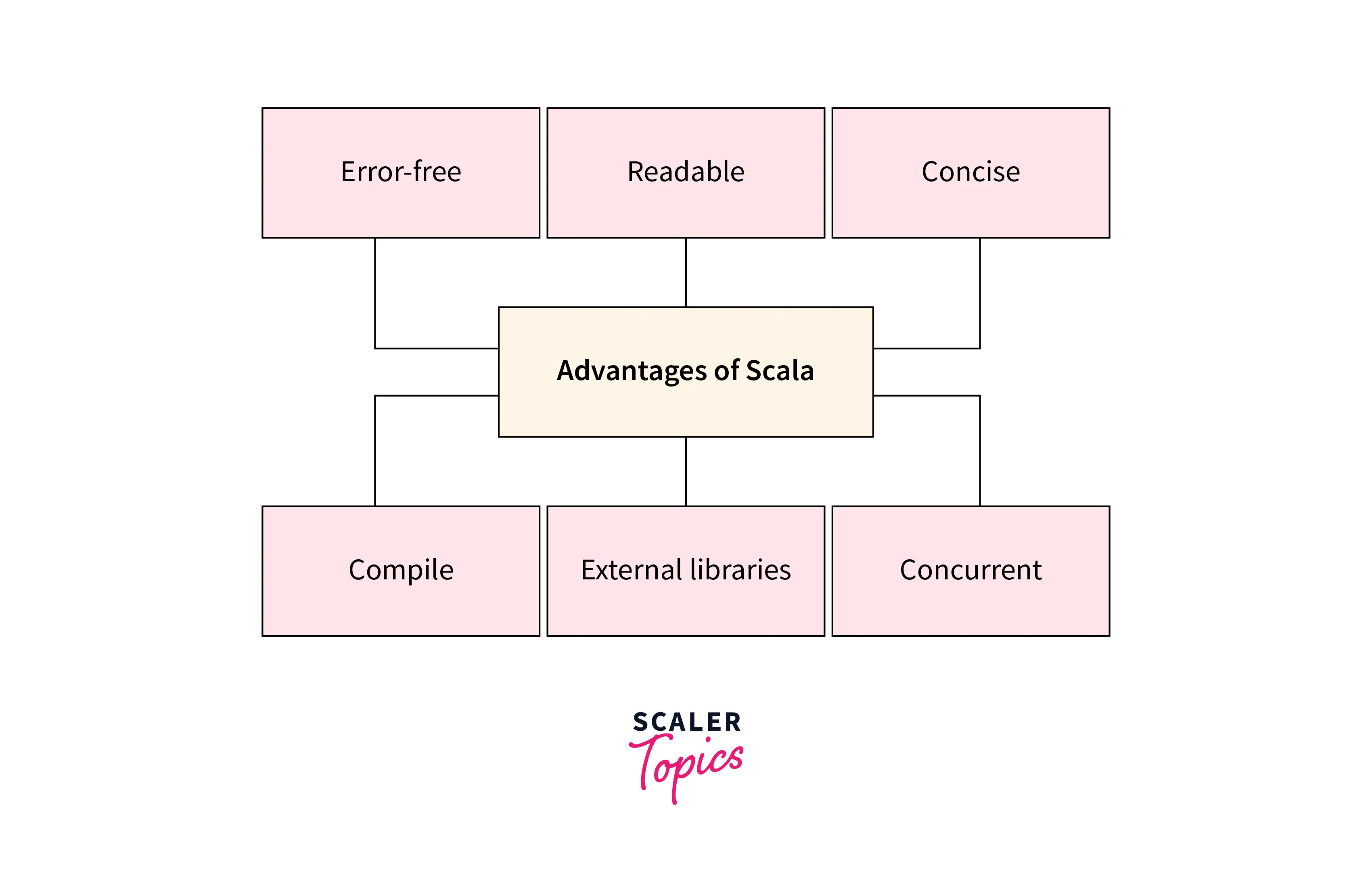
Scala offers several distinct advantages that make it a compelling choice for software development.
- Concise and Expressive Syntax:
Scala's concise and expressive syntax allows developers to write clean, readable code with fewer lines, reducing the potential for errors and enhancing overall productivity. - Seamless Java Integration:
Scala is interoperable with Java, enabling developers to leverage existing Java libraries and frameworks. This compatibility simplifies the process of integrating Scala into projects with established Java codebases. - Functional Programming:
Scala's strong support for functional programming enables developers to write code that is more modular, reusable, and easier to reason about. Features like immutability, higher-order functions, and pattern matching contribute to writing robust and maintainable code. - Concurrency and Parallelism:
Scala's built-in support for concurrent and parallel programming helps developers tackle the challenges of modern multi-core and distributed systems, enhancing application performance and responsiveness. - DSL (Domain-Specific Language) Creation:
Scala's flexible syntax and constructs allow developers to create domain-specific languages (DSLs) tailored to specific problem domains, enhancing code expressiveness and improving development efficiency.
What is Seq in Scala?
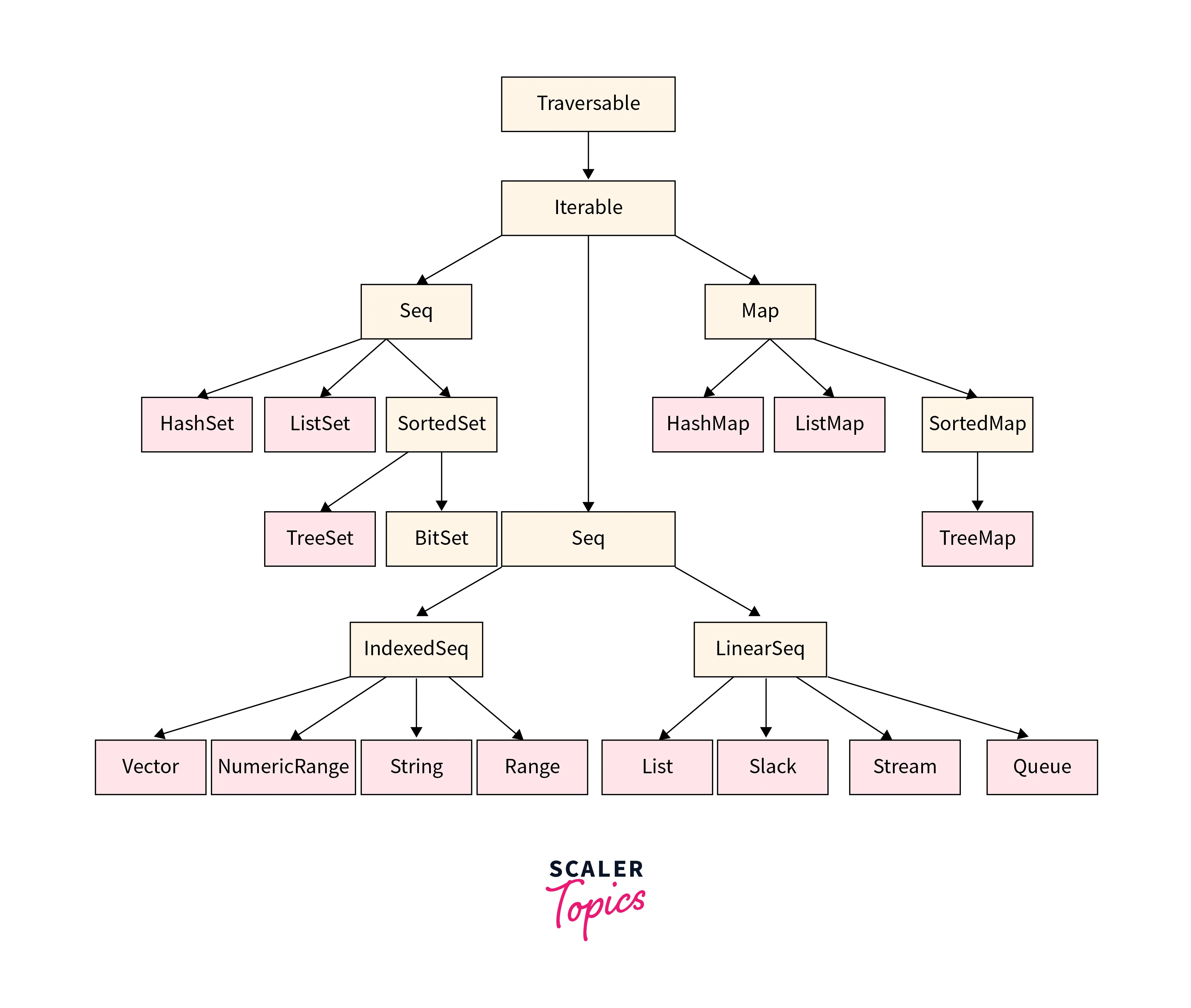
In Scala, Seq is a fundamental trait representing an ordered collection of elements with a specific type. The name "Seq" is short for "sequence."
As a trait, Seq defines a set of common operations that can be performed on sequences, such as accessing elements by index, iterating over elements etc.
Scala offers two main subtraits: immutable.Seq and mutable.Seq indicating whether a sequence is immutable or mutable.
- immutable.Seq:
Immutable seq in Scala, like List and Vector, maintains unchangeable elements post-creation, ensuring data integrity, supporting functional programming, and enhancing concurrency safety.
- mutable.Seq:
Mutable sequences in Scala, such as ArrayBuffer and MutableList, allow elements to be modified after creation. While offering flexibility, they require careful management to maintain data consistency and might introduce concurrency challenges.
- Both immutable.Seq and mutable.Seq share many common methods defined in the Seq trait. These methods include head, tail, filter, map, foldLeft, foldRight, and more.
Pattern matching allows developers to extract specific elements from a sequence based on matching patterns.
Different Types of Seq Methods in Scala
Scala's Seq methods can be categorized into different groups based on their functionalities:
Filtering Methods
- filter:
Returns a new sequence containing only the elements that satisfy a given predicate. - filterNot:
It returns a new sequence containing elements that do not satisfy the given predicate. - partition:
Splits the sequence into two sequences based on a predicate, one containing elements that satisfy the predicate and the other containing elements that do not.
Updating Methods
- updated:
Returns a new sequence with an element replaced at a specific index. - patch:
Returns a new sequence with elements inserted or replaced starting at a specific index. - padTo:
Returns a new sequence padded with a specified element up to a given length until it reaches the desired length.
Transformer Methods
- map:
Applies a transformation function to each element of the sequence and returns a new sequence with the results. - flatMap:
It maps each element of the original sequence to a sequence and then flattens the result into a single sequence. - collect:
Applies a partial function to each element and returns a new sequence containing only the elements for which the function is defined.
Informational and Mathematical Methods
- isEmpty:
Checks if the sequence is empty. - nonEmpty:
Checks if the sequence is not empty. - count:
Counts the number of elements that satisfy a given predicate. - indexOf:
Returns the index of the first occurrence of a specific element. - lastIndexOf:
Returns the index of the last occurrence of a specific element. - product:
Returns the product of all elements (requires numeric elements).
Grouping Methods
- groupBy:
Groups elements based on a key obtained from a given function, returning a map of keys to sequences of elements. - groupMap:
Similar to groupBy, but applies a transformation function to each grouped sequence, resulting in a map of keys to transformed values. - groupMapReduce:
Combines groupMap with a reduce function to compute a summary value for each group. - groupByN:
Groups elements based on a key obtained from a given function, returning a map of keys to sequences of elements, but allows multiple keys per element. - distinct:
Returns a new sequence containing only distinct elements. - distinctBy:
Returns a new sequence containing distinct elements based on a transformation function.
Looping Over a Seq with for and foreach
For Loop
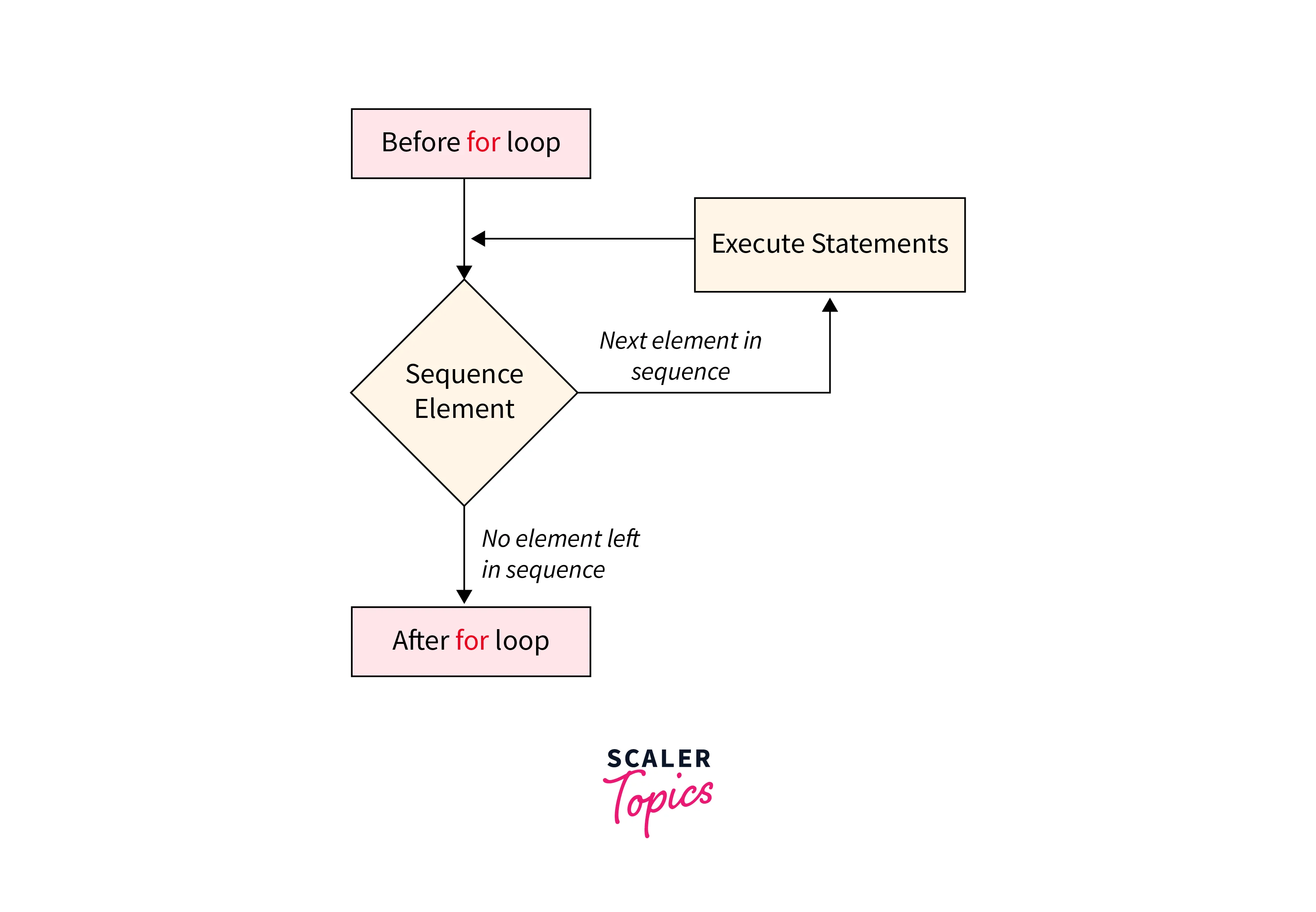
Description:
In Scala, you can use a for comprehension to loop over a Seq (sequence) which includes collections like List, Vector, and others. The for comprehension iterate through the elements of the sequence.
Syntax:
Example Code:
Output:
Explanation:
- The for loop iterates over each element in the numbers sequence one by one. The number variable holds the current element's value.
- By multiplying the current number by 2, the println statement prints both the original number and its corresponding multiplied value for each element.
Foreach Method
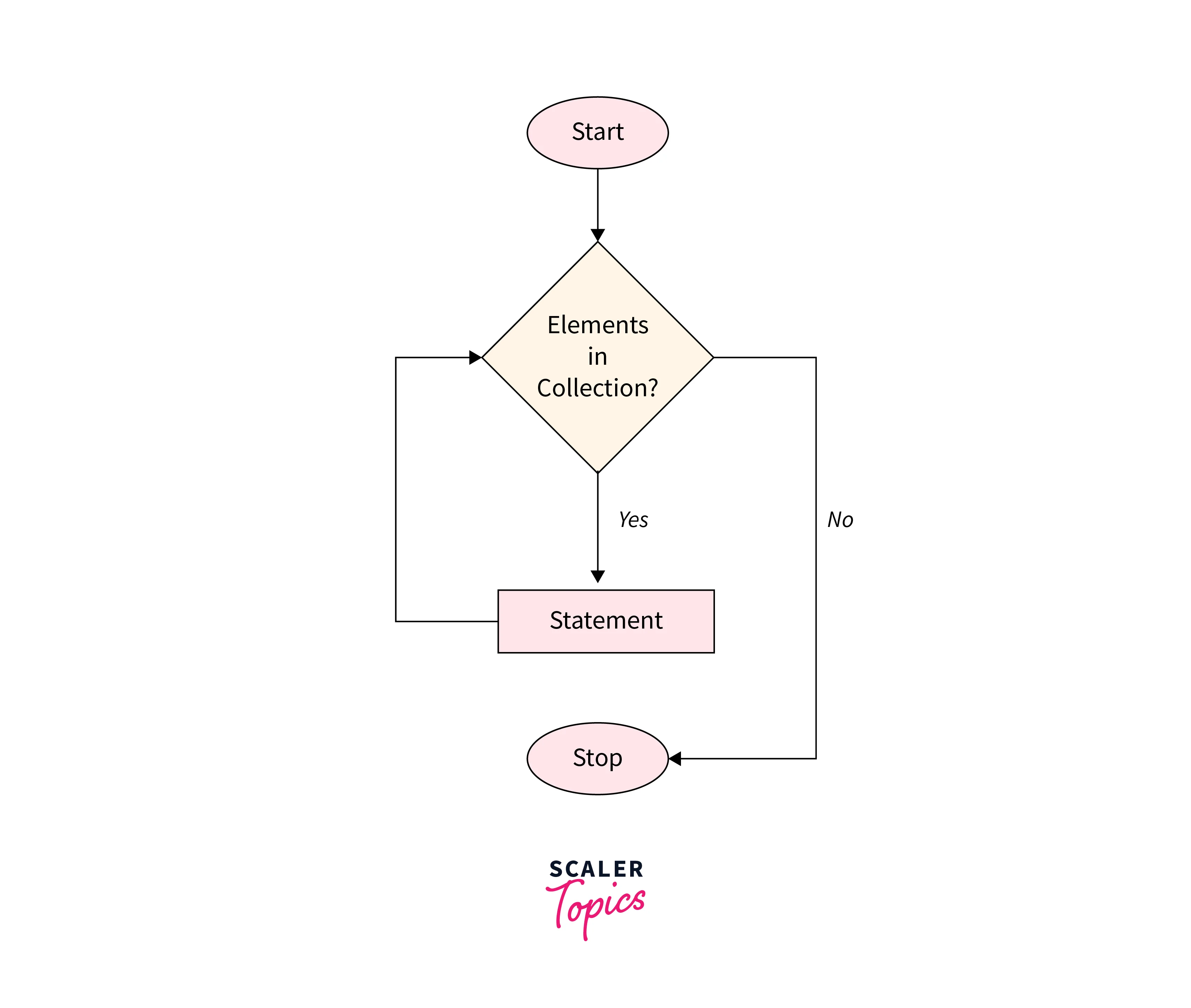
In Scala, you can use the foreach method to iterate over elements in a collection like a Seq and apply a function to each element. Here's the syntax, an example, and an explanation:
Syntax:
Example Code:
Output:
Explanation:
- We have a Seq named numbers with a sequence of integers. The number variable holds the current element's value.
- By multiplying the current number by 2, the println statement prints both the original number and its corresponding multiplied value for each element.
Seq of Options
A sequence (Seq) of options in Scala is a collection where each element is of type Option[T]. Options represent values that can be either Some(value) indicating a present value, or None indicating absence. This approach is used to handle optional or potentially missing data in a structured manner within collections, enhancing safety and clarity in scenarios involving nullable values.
Here's how you can work with a Seq[Option[A]]:
- Creating a Seq of Options:
- Accessing Values:
Use methods like getOrElse, map, or foreach:
- Filtering and Transforming:
Use methods like flatten, collect, or a combination of filter and map:
- Combining Options:
You can use methods like foldLeft, reduce, or getOrElse to combine the values within the Option elements:
- Pattern Matching:
Pattern matching allows you to extract and handle different cases in the Seq[Option[A]]:
Using Option in a Seq provides a concise and elegant way to handle optional values and avoid the issues related to null pointers. By representing optional values explicitly, developers can write safer and more readable code that clearly indicates the presence or absence of values in the sequence.
Conclusion
- In Scala, a Seq[Option[A]] is a collection that represents a sequence of optional values, where each element can be either Some(value) or None.
- Option is used to explicitly handle optional values, promoting safer code and avoiding null pointer exceptions.
- Seq[Option[A]] is useful when working with data that may have missing or optional values.
- It allows developers to gracefully handle scenarios where some elements might have values while others may not.
- The getOrElse, map, foreach, flatten, and collect methods are commonly used to access and manipulate values within the Option.
- The language's strong static typing catches errors early in development.
- Scala merges functional and object-oriented paradigms for versatile coding.
